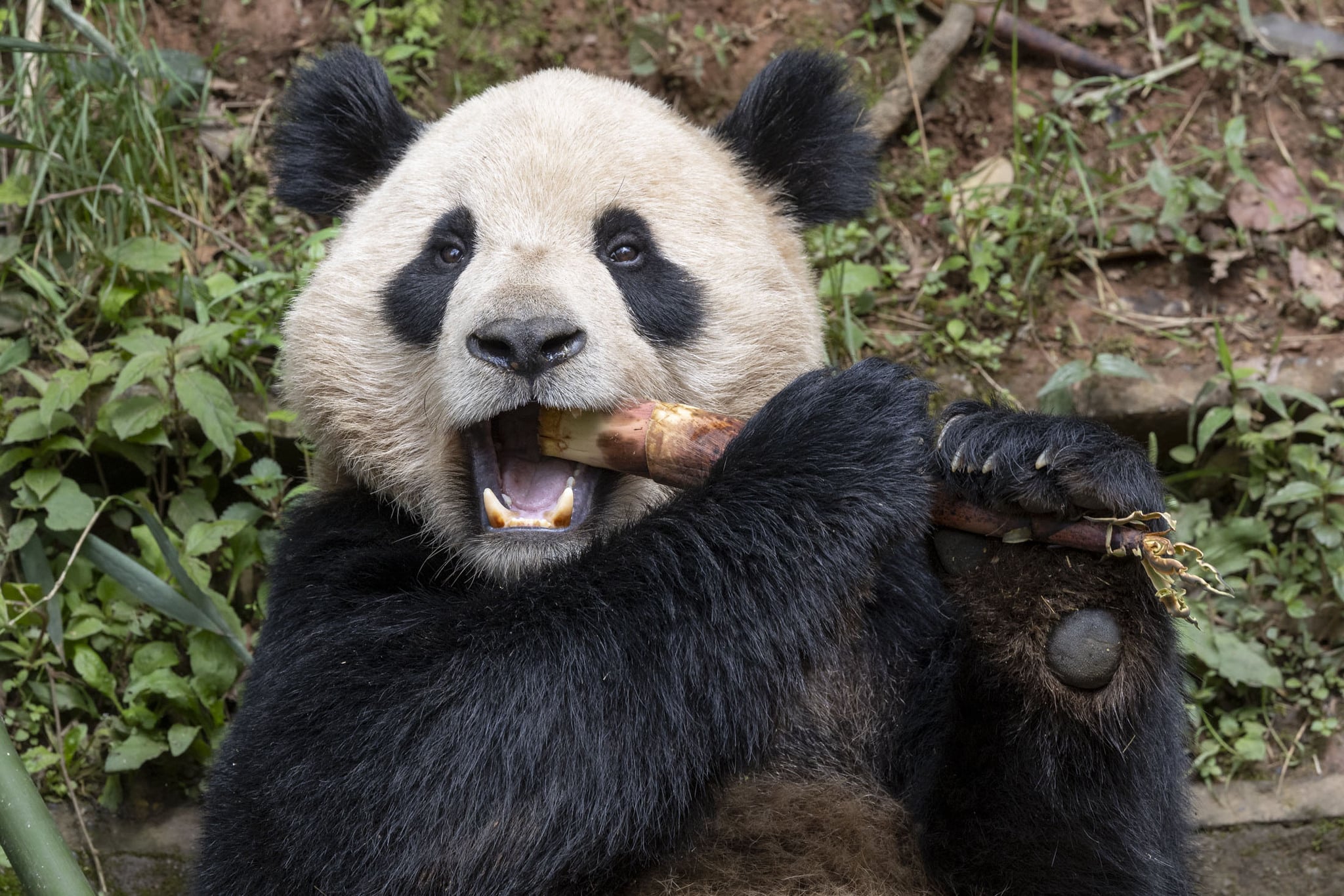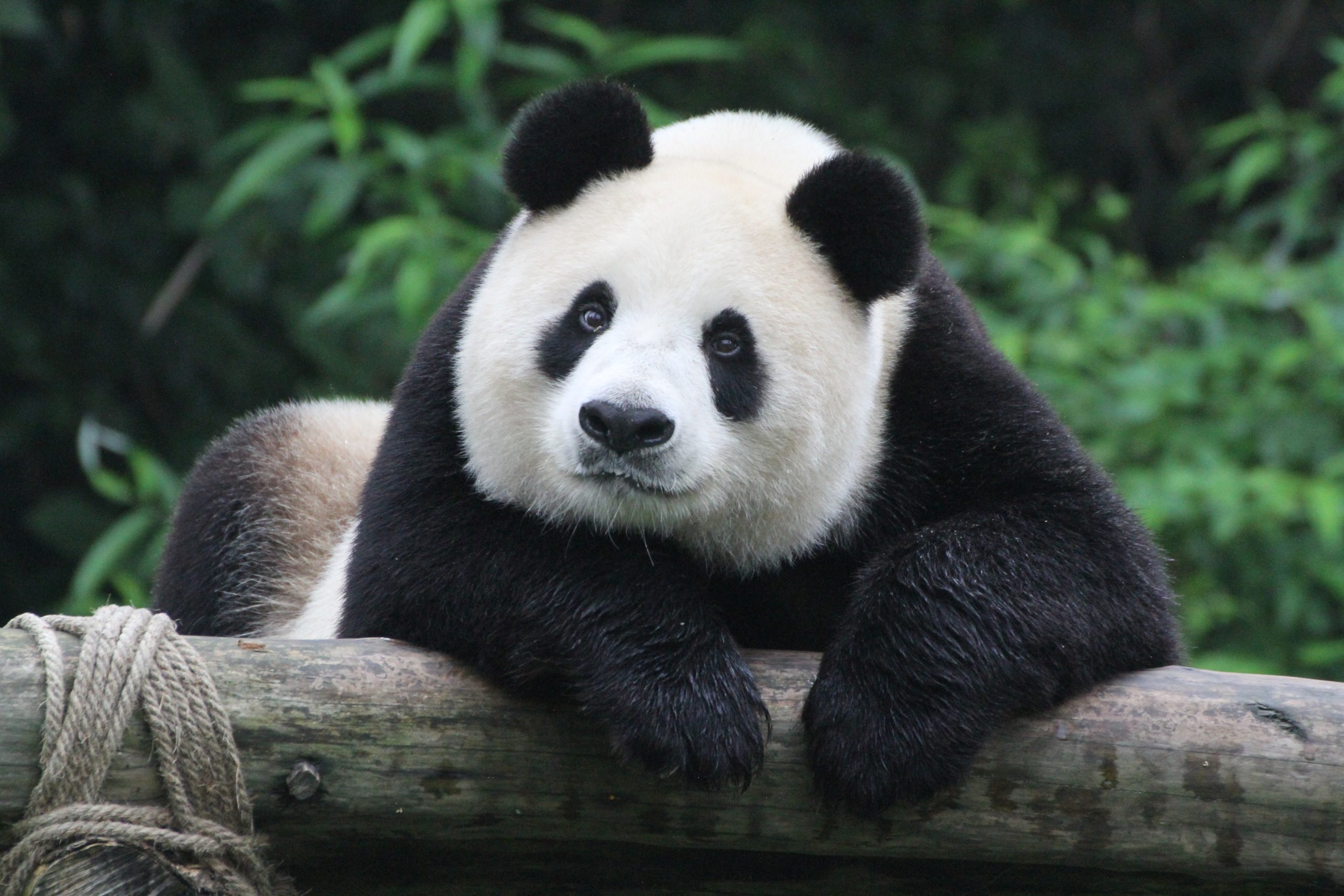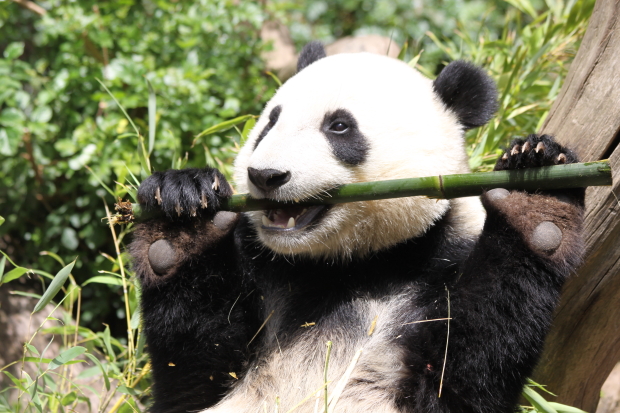Wild Food vs. Zoo Food
Jennifer Parsons, associate nutritionist for San Diego Zoo, wrote the following article about panda food in the wild and in zoos:
In the wild, one to five percent of a giant panda’s diet is non-bamboo food items. This may include wild fruits or berries, scavenged meat, and opportunistically caught small mammals. So why don’t we offer in-season berries and fruits to the San Diego Zoo’s pandas, just as they might snack on in the wild?
Keep in mind that the fruits these animals eat in the wild are very different from those that are cultivated for human consumption. In fact, wild fruits are much, much higher in fiber and lower in sugar than those we eat, since humans have bred cultivated produce for thousands of years to match our own tastes and preferences. We always strive to do our best to match each species’ wild diet, so we try to use fruits sparingly, mainly as a training tool or reward. Our pandas like apples, yams, and carrots just fine, so we usually stick to those as our “go-to” training items, though we do occasionally use applesauce and other extra-desirable foods to make sure they take any needed medications. But above all, we try to keep in mind that 95 percent or more of their wild diet is bamboo and copy that as closely as we can.
In addition to their bamboo, they also get a high-fiber commercial biscuit that supplies their vitamins and minerals. In the wild, of course, pandas don’t have access to such supplements, nor would they need them. Wild pandas are able to eat fresh bamboo growing straight out of the ground, full of all of the nutrients they need. We don’t have the luxury of growing a bamboo forest in the Zoo, so we have to cut their food from elsewhere and transport it. Just as vegetables are more nutritious for us when they’re fresh, bamboo loses some of its nutrients once it’s cut and transported, so we need to make sure we’re meeting all of the nutritional needs of our panda family.
Source: San Diego Zoo
Related Posts
 2024-06-26Yun Chuan and Xin Bao moved to San Diego
2024-06-26Yun Chuan and Xin Bao moved to San Diego 2024-04-26San Diego Zoo's new panda pair
2024-04-26San Diego Zoo's new panda pair 2024-02-22San Diego Zoo Wildlife Alliance and China Wildlife Conservation Association Sign a New Cooperative Agreement for Giant Panda Collaboration
2024-02-22San Diego Zoo Wildlife Alliance and China Wildlife Conservation Association Sign a New Cooperative Agreement for Giant Panda Collaboration 2019-04-16Tree Dens Play a Critical Role for Giant Panda Mothers Rearing Cubs
2019-04-16Tree Dens Play a Critical Role for Giant Panda Mothers Rearing Cubs






